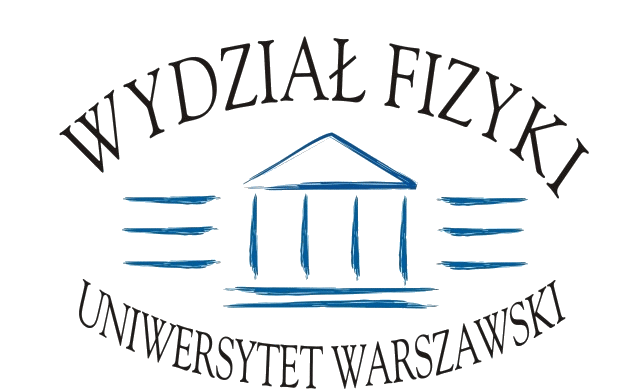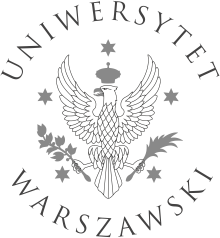Konwersatorium im. Leopolda Infelda
2006/2007 | 2007/2008 | 2008/2009 | 2009/2010 | 2010/2011 | 2011/2012 | 2012/2013 | 2013/2014 | 2014/2015 | 2015/2016 | 2016/2017 | 2017/2018
Loop Quantum Gravity
Self-focusing of the flow: On the growth of karst conduits and river networks
Relativistic beams endowed with angular momentum
Physics for medicine - proton radiotherapy
The basic factor which determines the success of radiotherapy is delivering the highest possible dose of ionizing radiation to the tumor volume while sparing the neighboring critical organs and healthy tissues. Protons with energies from about 60 MeV to 250 MeV are useful for cancer treatment because of the phenomenon of the Bragg peak i.e. increasing of energy deposition the at the end of protons path in tissue and the well-defined range. Therefore, the unwanted doses to healthy organs, particularly the entrance dose, are minimal as compared to MV X-rays used in conventional radiotherapy. This is of particular importance to pediatric patients in whom the probability of later radiation-induced cancer should be minimized.
Ion radiotherapy was proposed in 1946 by Robert Wilson. In 1991 the first hospital – based proton radiotherapy center, with dedicated accelerator, has been put in operation in Loma Linda, California, US. From that time significant progress has been made, particularly due to introducing of the rotating gantry, narrow scanning beams, verification of the dose distribution by PET measurements of induced β + radioactivity and merging the existing diagnostic technologies. Pencil Beam Scanning (PBS) allows to perform Intensity Modulated Proton Radiotherapy, with the best possible dose distribution in the target volume and minimizing doses to critical organs.
In Poland since February 2011 proton patients from Kraków University Hispital suffering from eye melanoma were irradiated at IFJ PAN with 60 MeV proton beam using home-developed AIC-144 cyclotron. In October 2015 Bronowice Cyclotron Centre with the new 230 MeV Proteus C-235 proton cyclotron with the new eye line and two sophisticated proton PBS gantries is fully operational. The eye treatment was moved to the new place. Up to now 36 patients were treated on gantries and 150 patients with eye tumors. The capacity of the center is used only in 20% due to the limited tumor indications in Poland, as regulated by the Ministry of Health. Therefore many Polish patients are still going abroad for the very expensive treatment, which is financed from private sources or by different foundations.
B-meson physics anomalies
Testing fundamental interactions with few electron atoms and molecules
Hydrogenic systems like H, $mu$H, muonium, and positronium are being considered for the determination of fundamental physical constants and for low-energy tests of the Standard Model. The precision of these tests, however, is limited either by a short natural life-time or by uncertainties in the nuclear structure.
Additionally, the mean square charge radius observed for the proton structure in electronic and muonic hydrogen differs significantly, and the source of this disagreement remains unknown. This so-called proton radius puzzle results in large uncertainty in the Rydberg R$_infty$ constant.
I propose to perform high-precision calculations for two- and three-electron systems, such as helium- and lithium-like ions, and H$_2$ molecule. Together with ongoing and planned high precision measurements, this will lead to the improved determination of the absolute nuclear charge radii.
Moreover, combined with the muonic determination of nuclear charge radii, this will allow low energy tests of the Standard Model and improved determination of fundamental physical constants.
Nuclear Science and Technology in National Centre for Nuclear Research after first 5 years
The National Centre for Nuclear Research commenced operations on September 1, 2011. The Polish Government's decision to merge POLATOM Institute for Atomic Energy (IEA) and the Sołtan Institute for Nuclear Studies (IPJ) has ended an almost 30-year-long period, during which the Swierk Research Center remained fragmented. The former Institute for Nuclear Research has been brought back to life under a new name and with a new set of tasks to accomplish.
NCBJ conducts pure and applied research in broadly understood nuclear physics, elementary particle physics, astroparticle, plasma physics. The Institute specializes in accelerator physics and technology, material research with nuclear techniques, the development of spectrometric techniques, nuclear electronics. The Institute operates the multifunctional nuclear research reactor MARIA. Radioisotope Centre POLATOM is located in the structure of NCBJ. POLATOM develops techniques for practical application of radioisotopes in various sectors, among them the majority of products and services is used in health care.
I will present the current scientific activity of NCBJ, plans, and vision for the future development.
Beautiful Amplitudes
In high energy scattering processes, nature is probed at very short, subatomic distances. Quantum field theory, in particular gauge theories, provide theoretical foundations of the standard model of particle physics and offer powerful tools for computing scattering amplitudes in perturbation theory.
Much less is known about quantum gravity, but the recent discovery of gravitational waves prompts us to consider scattering processes involving gravitons, hypothetical quanta of gravitational radiation. At this point, the scattering processes involving gravitons are of purely academic interest, but it is hoped that understanding such processes will provide some clues to quantum gravity. Indeed, the structure of scattering amplitudes indicates some deep connection between gauge theory and gravity.
Transverse migration of polyelectrolytes in microfluidic channels: Concentrating and purifying DNA?
I will describe recent microfluidics experiments using DNA as a model polyelectrolyte. The DNA is introduced into the channel by a pressure driven flow, and simultaneously subjected to an axial electric field.
Epifluorescent and confocal microscopy have been used to show that, under opposing fields, the DNA migrates to the walls of the microfluidic channel. An interesting consequence is that DNA then rapidly accumulates near the channel inlet, suggesting a possible means to both concentrate and purify DNA.
Unlike a number of electrokinetic-based separations, the trapping of the DNA does not depend on complex flows or fields. Rather, it exploits (we think) a little studied aspect of polyelectrolytes; namely that an electric field can generate a long-range (1/r^3) flow around the molecule. When combined with symmetry breaking, induced (for example) by a shear flow, this leads to novel length-dependent motions of the polymer.
In this talk I will summarize the results of our experiments, present the outline of a theory to describe the migration, and suggest possible biotechnology applications.
Origin of caves in limestone terrains. A process oriented modeling approach
Limestone rock is dissected by many narrow fractures, both horizontal and vertical, with aperture widths in the order of 0.1 mm. Water loaded with carbon dioxide penetrates into these fractures as a weak acid and can widen them by chemical dissolution of CaCO3. This process creates spectacular karst landscapes hosting caves and underground rivers. A model based on the hydrodynamics of flow in fracture systems and its coupling to dissolution of limestone is presented. From this model one can understand the processes by which caves and limestone aquifers originate. The model can be applied to a variety of geological and geochemical scenarios.
First, a short introduction into the chemistry of dissolution kinetics of calcite (CaCO3) in water containing carbon dioxide is given. As basic element of the model widening of a single plane parallel fracture is derived. Then the evolution of cave systems originating from local water inputs on a limestone plateau is presented. As a second building block of karst evolution it will be shown how an aquifer develops from evenly distributed input of rain water to the surface of a limestone plateau. In a third scenario the concept of mixing corrosion is applied to explain the origin of isolated caves without entrance and exit in Florida.Finally we use the model to discuss the risk to the operation of dam sites by evolution of karst conduits below the dam due to the high pressure by the impounded water. This can cause unbearable loss of water and endanger the structure of the dam.
Nobel 2016
Streszczenie:
The 2016 Nobel Prize in Physics was awarded to David J. Thouless, F. Duncan M. Haldane, and J. Michael Kosterlitz "for theoretical discoveries of topological phase transitions and topological phases of matter".
The Nobel Committee does not mention a specific discovery, but rather refers to a collection of groundbreaking results, which lay at the foundation of our current understanding of topological phases in quantum matter.
We aim at presenting a short account of the historical context and a pedagogical explanation of the original results associated with the names of Nobel 2016 Laureates. In our talk we will discuss:
1) phase transitions in two dimensions triggered by vortices,
2) the gapped phase of spin one chains and 3) the topological invariant underlining the physics of the quantum Hall effect.
We believe the intellectual achievements of this year's Laureates are breathtaking for their own sake, even without direct reference to applications. "It's very difficult to know whether something is useful or not, but one can know that it's exciting" -- as summarized by Haldane in the first Nobel interview.
Referat zostanie wygłoszony w ramach wspólnego posiedzenia konwersatoriów im. J. Pniewskiego i L. Infelda.
Zapraszamy!
Jan Kalinowski, Jerzy Kijowski, Czesław Radzewicz, Wojciech Satuła, Janusz Skalski
Bosonic Theory of Superconductivity
Historically, two paradigms competed to explain superconductivity (i) Bose Einstein Condensation (BEC) of weakly interacting Charge 2e pairs (Schafroth), and (ii) pairing instability of the Fermi liquid (BCS).
BCS theory was the unquestionable winner until the late 80's. BCS approximations however, have suffered major setbacks in the advent of high temperature, short coherence length superconductors, such as cuprates, pnictides, and granular superconducting films.
A third paradigm has offered itself for understanding some properties of unconventional superconductors: Strongly Interacting Lattice Bosons (LB). LB behave less like in BEC's or BCS theory, but (strangely) more like localized quantum spins. Their static correlations are very well understood by theories of quantum antiferromagnets. Their dynamics have only recently been explored. Near commensurate fillings, recent cold atom and thin films experiments have discovered the condensed matter version of the Higgs/ Amplitude mode. Conductivity of Lattice Bosons exhibit strange metallic properties, such as linear in temperature resistivity. LB also exhibit interesting vortex dynamics and Hall conductivity sign reversals.
Refs:
1. N. H. Lindner and A. Auerbach, Phys. Rev. B 81, 054512 (2010).
2. D. Podolsky, A. Auerbach, D. P. Arovas, Phys. Rev. B 84, 174522 (2011).
3. S. Gazit, D. Podolsky, A. Auerbach, Phys. Rev. Lett. 113, 240601 (2014).
4. D. Sherman et. al., Nature Physics 11, 188 (2015).






